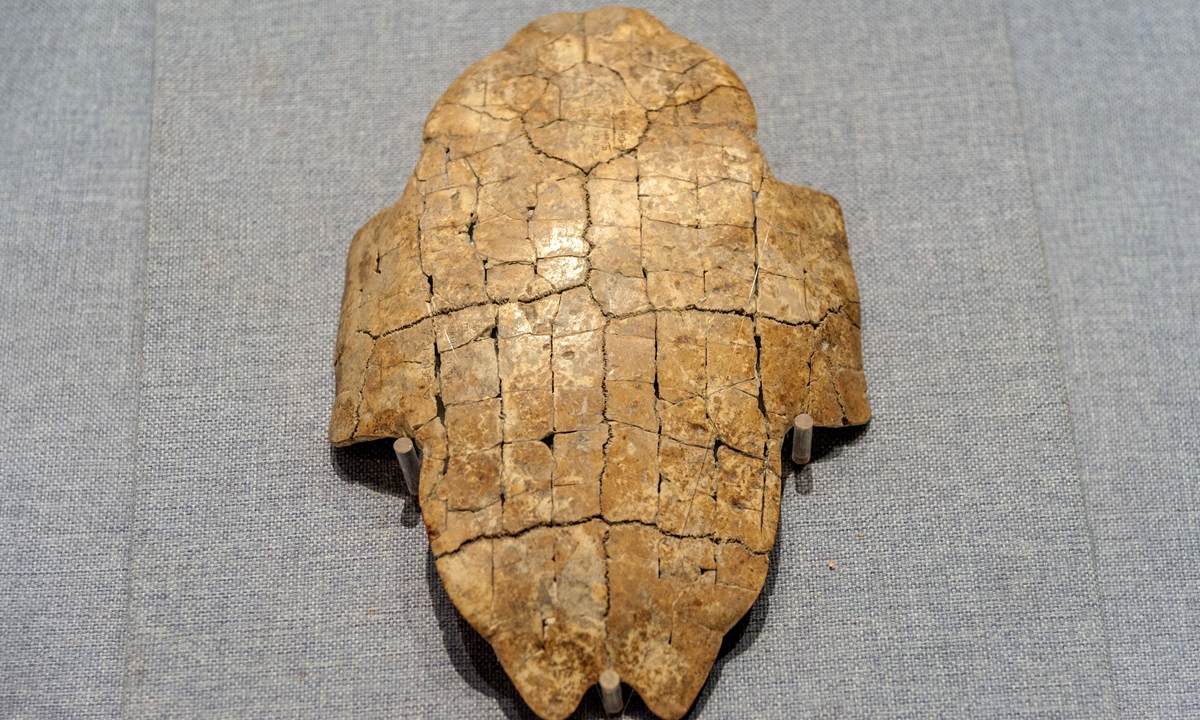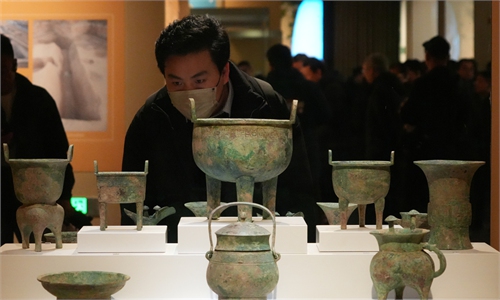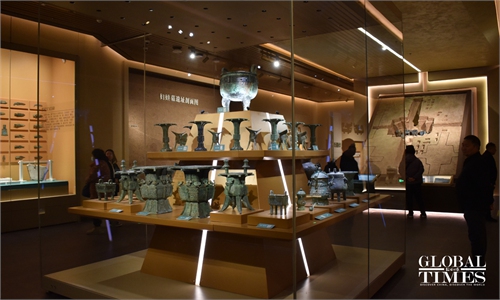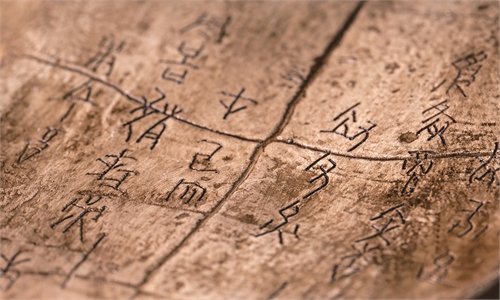ARTS / CULTURE & LEISURE
Exclusive: No evidence to indicate misconduct or wrongdoing concerning missing items: Canadian museum
Objects may have been ‘renamed, re-categorized’

An oracle bone at the Yinxu Ruins Photo: VCG
The Royal Ontario Museum (ROM) has vigorous security procedures in place, and there has been no evidence to indicate that any objects are missing as a result of misconduct or wrongdoing, the Canadian museum told the Global Times on Sunday in response to a report that 2,234 items in its collection, including 136 oracle bones from China, are unaccounted for.A recent report by TorontoToday said that the ROM cannot account for 2,234 items that are supposed to be in its collections. The missing items are wildly varied and could stock a museum on their own, the report says. Notably, 136 oracle bones are among the missing antiquities.
"ROM is committed to the thorough documentation, maintenance, and care of the more than 18 million objects included within the museum's collections. While ROM has a robust and detailed inventory management system in place, many items were initially acquired or cataloged prior to the availability of modern museum tools, practices, and systems. Over time, objects may have been moved, renamed, or re-categorized, which could result in accounting duplications, objects temporarily appearing to be unaccounted for, or objects later found in a different storage location," the museum told the Global Times in an email.
The museum has vigorous security procedures in place, and there has been no evidence to indicate that any objects are missing as a result of misconduct or wrongdoing. These are issues shared among peer institutions all over the world, due to the need for greater funding to further resource the documentation of collections, it said.
Oracle bone inscriptions, or jiaguwen, are an ancient form of Chinese writing found on tortoise shells and animal bones. They are a primitive form of Chinese characters and the oldest known fully developed characters in China. Oracle bones were used during divination rites and ceremonies worshiping the gods held by the late Shang Dynasty (c.1600BC-1046BC) people.
First discovered in 1899, oracle bone inscriptions were included on the UNESCO Memory of the World Register in 2017.
Around 160,000 oracle bones have been found so far, but of the 4,300 characters inscribed on them, only 1,600 have been decoded. Many oracle bones have been scattered across the world over the past century, making it more difficult for researchers to study them.
Across the ROM's art and culture collections, about one item in 250 is unaccounted for. Most of the now-missing oracle bones were acquired together in 1931, according to TorontoToday.
Oracle bones, being the earliest known records of Chinese writing, are invaluable for studying ancient Chinese civilization. Their loss disrupts the study of human history and highlights vulnerabilities in artifact management.
China's proactive measures in cultural heritage protection shall provide valuable lessons for the world. Through advancements in digitization, systematic classification, and robust international cooperation, China has demonstrated how to modernize artifact management effectively.
The ROM is not the first museum to deal with missing antiquities. In 2023, the British Museum in London disclosed the theft of approximately 2,000 artifacts, including gold jewelry and gems, attributed to a staff member over an extended period. The museum's director resigned following criticism of the institution's inadequate response to earlier warnings about the thefts.
"Frequent scandals involving the theft and damage of artifacts have occurred at several Western museums, such as the British Museum. These incidents have caused significant harm to the cultural heritage of the artifacts' countries of origin as well as to humanity's shared heritage," Huo Zhengxin, a law professor at the China University of Political Science and Law, told the Global Times.
These events underscore the necessity for museums globally to enhance their security measures and maintain meticulous records to safeguard cultural heritage through collaboration.



